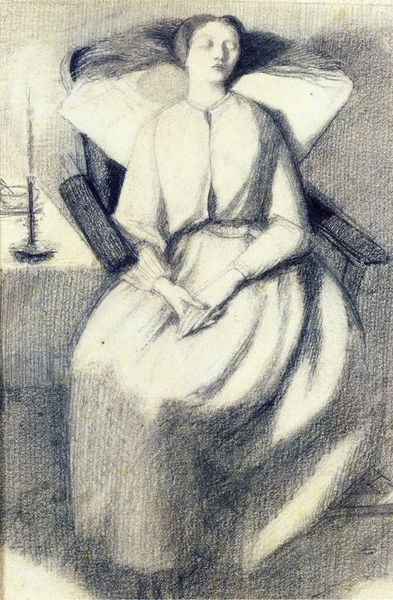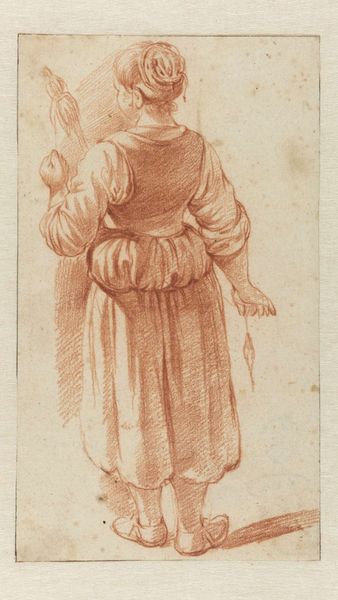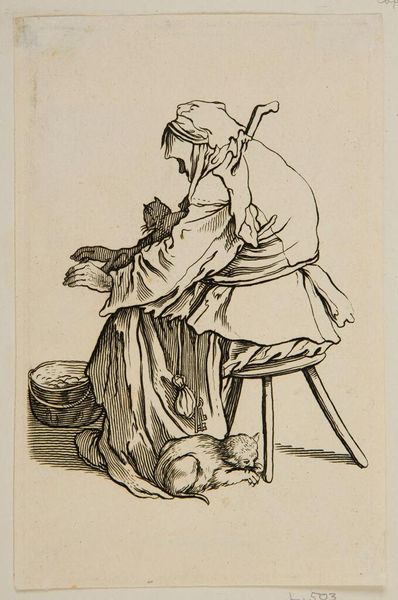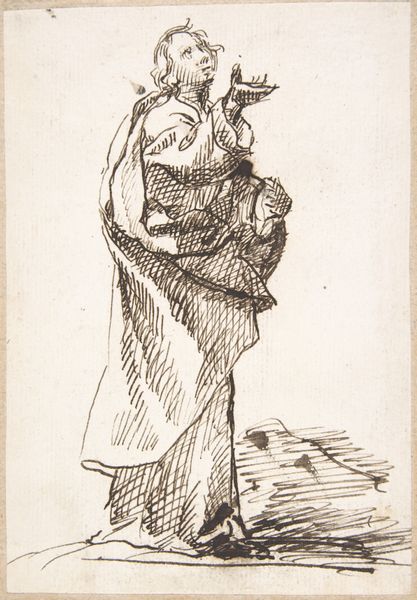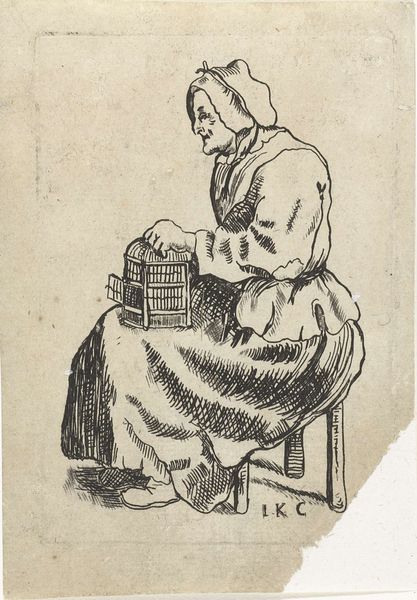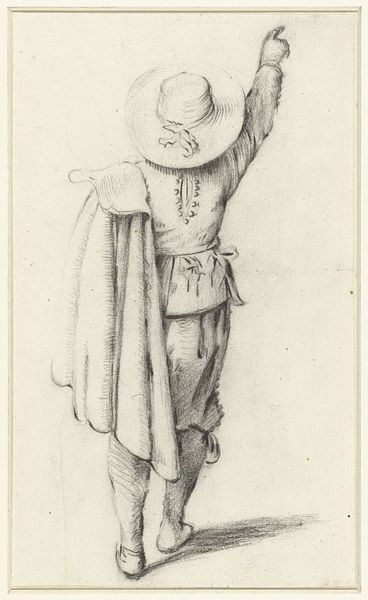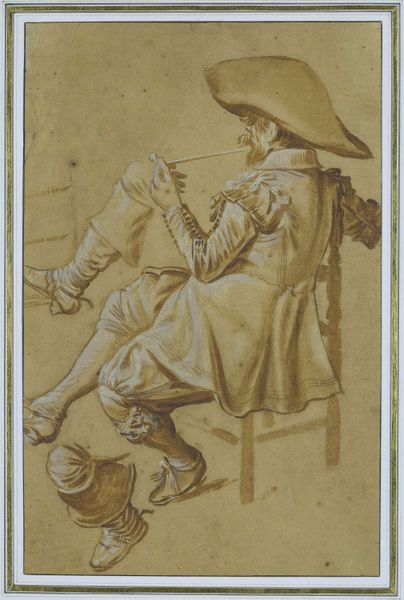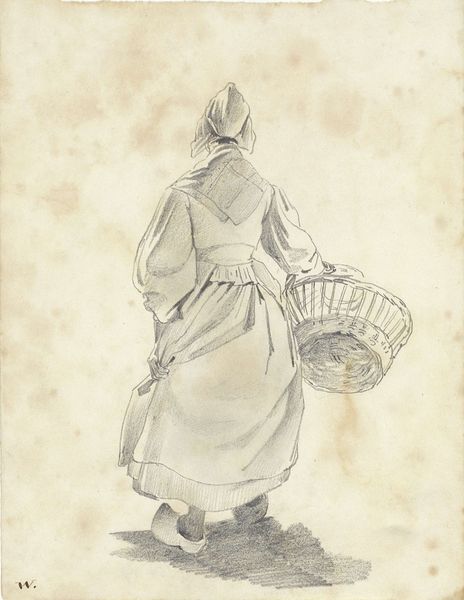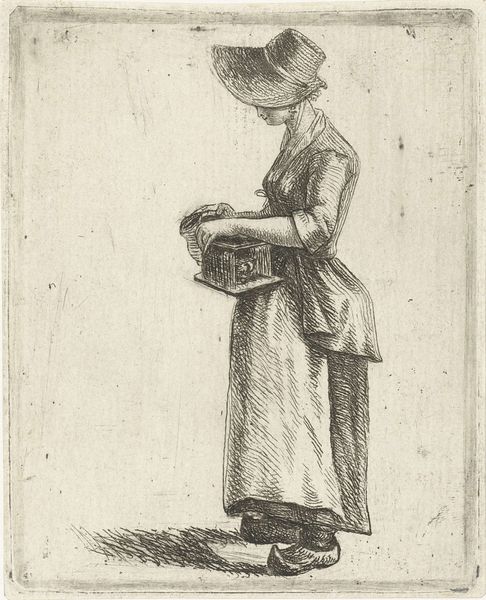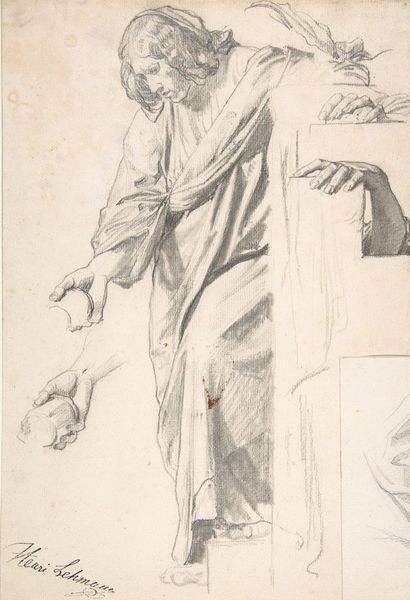
drawing, paper, ink
#
portrait
#
drawing
#
medieval
#
caricature
#
paper
#
ink
#
line
#
portrait drawing
#
northern-renaissance
Copyright: Public domain
Curator: Ah, here we have Hans Holbein the Elder's "Sitzende Frau von hinten," made around 1500. It’s a drawing done in ink on paper. Editor: My initial impression is... veiled. Not just physically, but there's a real sense of concealment here. She's facing away, but even her head is shrouded. Curator: Yes, Holbein really captures a particular stillness. The figure is, as the title suggests, a seated woman, seen from behind. It's deceptively simple, yet somehow compelling. Editor: I think what draws me in is how that headdress nearly erases her identity. It’s fascinating how fabric can be used as both ornamentation and as a form of erasure. What societal role did such head coverings play, I wonder? Curator: That's an interesting perspective. In Holbein's time, such coverings signified modesty, but it seems he explores more. Her posture feels... weary, or maybe contemplative? The cascading folds of her dress certainly speak to status, or at least aspiration, contrasting sharply with that plain wooden chair. Editor: Right, it is intriguing, isn't it? That plain chair juxtaposed with the obvious finery. And is that fabric pooling on the floor a symbol of wealth or perhaps something more psychologically weighted like hidden anxieties? Fabric often symbolizes societal constraint but maybe the fabric could signal that, too. Curator: Perhaps. What I find interesting, even humorous, is Holbein's unflinching portrayal. There’s almost a touch of caricature here – not malicious, but certainly unsentimental. It avoids the traditional, idealized female form that was popular at the time. It is such an ordinary scene, yet it provokes these extraordinary thoughts about personhood. Editor: It does force one to consider perspective, quite literally. Holbein invites us to ponder the burdens and shields we carry, visible only from certain angles. Thanks, Holbein, for a rear view that prompts such front-of-mind questions.
Comments
No comments
Be the first to comment and join the conversation on the ultimate creative platform.

